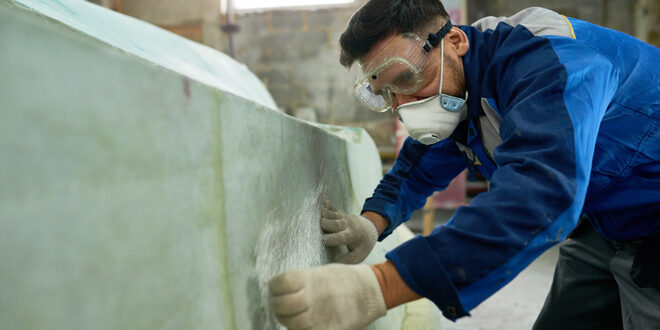Personal protection equipment (PPE) such as safety gloves, coveralls and eyewear generally come in one type, making it easy to recommend the right product to customers. When it comes to masks and respirators, however, the choices vary.
Whether your customer is a professional contractor or a DIYer, both groups benefit from using a mask or respirator. However, they might not realize the importance of choosing the right one to protect them on the job and minimize potential health issues. The type of mask a painter needs depends on the job they are performing and the toxicity of paint or solvent they are using.
Respirator Masks
Respirator masks, also called particulate or dust masks, come in numerous varieties. OSHA states that for a mask to be considered a respirator, it must include a filter of some type, be approved by the National Institute for Occupational Safety and Health and state the organization’s rating on the product.
The now well-known N95 mask is one type of particulate respirator. It includes a valve that filters at least 95 percent of airborne particles like dust from sanding and fumes from paints and solvents. 3M offers multiple options, with their 3M™ Particulate Respirator 8210 as a popular option.
If your customers are concerned about paint fumes, a paint fume respirator, like 3M’s Cool Flow™ Valve Particulate Respirator 8577, specifically blocks fumes and prevents respiratory exposure to chemicals in the paint. It also works well for light sanding. Respirator masks are also available specifically to work with fiberglass.
Combination Respirators
Combination respirators are great for painters working with solvent-based paints that have strong fumes and toxic vapors. Typically, these respirators are reusable and protect against most vapors and gasses painters encounter.
Combination respirators offer the highest level of protection and come in several varieties, including half-face, full-face and air-purifying respirators, like MSA Safety Incorporated’s Advantage® 900 Elastomeric Half-Mask Respirator, which filter the user’s inhaled air before they breathe it in.
Honeywell also offers a variety of combination respirators, including the Honeywell North® RU8500 Half Mask and the 7800 Series Combination Supplied Air And Air-Purifying Respirator, a full-face air purifying respirator.
Hot Tip
Combination masks generally require a filter or cartridge users should change regularly. OSHA provides a color-coded system so users know what cartridge protects against what hazards.
While the OSHA cartridge color chart includes 16 categories, painters will generally use cartridges with black, yellow or brown color codes, which work against organic vapors, or orange and teal codes, which protect against particulates.
Fabric Masks
Fabric masks provide the lowest level of protection, reducing exposure to solid particles like dirt and dust but offering no respiratory protection against hazardous gasses or vapors.
This type of mask is typically disposable and suitable for light sanding jobs. It offers some protection against paint odors when painting with water-based latex paints.
The Enro Tech Mask has a bendable nose-bridge wire, adjustable ear loops and filters 99% of 0.5-micron particles. It also comes in various colors and patterns.
Knowledge Counts
According to the U.S. Occupational Safety and Health Administration (OSHA), water-based latex paints generally do not cause health issues, while oil-based paints contain hydrocarbons and volatile organic compounds (VOCs), which can cause breathing issues. The chemicals in paint thinners and other solvents can also be damaging to the respiratory system if inhaled.
Your employees should know what masks and respirators to recommend depending on the type of paint or solvent a customer is using. They should also be able to educate customers on proper mask maintenance and finding the right fit.
Be sure you’re always consulting the right source for guidance. Manufacturers include instructions for use and provide guidance for what each mask can be used for and protects against.
 Hardware Retailing The Industry's Source for Insights and Information
Hardware Retailing The Industry's Source for Insights and Information








